Morgan Le Fay – Heroine, Goddess, Witch, Fay, Or A Sorceress In Arthurian Traditions
A. Sutherland - AncientPages.com - Morgan le Fay – a heroine in Arthurian traditions – is associated with a threatening and intriguing female character. She is a priestess, sorceress of Avalon Island and a powerful being with a close connection to the Otherworld.
Image credit: Frederick Sandys - Public Domain
Her nickname, Le Fay, relates her to the underworld. Her name comes from 'morgan,' a Welsh word that means visitor from the sea' or resident of the sea.'
In later medieval romances, Morgan le Fay appears as Fata Morgana. Her name gives rise to the name Mirage (Illusion). In addition, she is associated with the ancient cult of the Mother Goddess, but she also gained popularity as the goddess of death and war. According to some, her personality was probably based on Breton myths of highly dangerous water spirits - the mermaids of Brittany.
"These mermaids of Brittany were regarded as highly dangerous. Usually described as morgen or mari-morgan, they were thought to lure men to their deaths as a result of their beauty or because they revealed a glimpse of fabulous cities beneath the waves. In either case, once attracted, a man was drawn beneath the waves and drowned." 1
A detail of The Last Sleep of Arthur in Avalon by Edward Burne-Jones (1898), showing Morgan (with her sisters) in her initial literary portrayal and role from Geoffrey of Monmouth's 12th-century poem Vita Merlini. Image credit: Edward Burne-Jones – Public Domain
Other similar creatures were called the morwreg, the daughters of the sea, and had bright, silver fishtails.
Conversely, she is associated with the givers of life, Modron and Matrona. Perhaps Morgan represents many personalities and is a very complex character.
Was Morgan A Goddess, A Witch, A Fay, Or A Sorceress?
Generally, Morgan is considered a mysterious being. She is depicted as a healer and wise woman, even a sort of feminist icon of a strong, independent, powerful woman. She is good in some versions of the Arthurian legends, especially early ones.
In later stories, though, she is an evil enchantress.
Tradition has it that King Arthur had several half-sisters, children of their mother Igraine and her first husband, Duke Gorlois of Cornwall. When Morgan was still a little girl in a convent boarding school, she learned magic, and at the same time, some legends say she continued her study of magic with the great magician Merlin. Ambitious and very intelligent, she soon possessed great enchantment powers and used them.
In ancient texts by Chrétien de Troyes (c. 1160-1191), a French poet was known for writing on Arthurian subjects such as Lancelot, Perceval, and the Holy Grail. Morgan is portrayed as hostile to both King Arthur and Guinevere.
Under the influence of Christianity, the image of Morgan changes into an evil witch engaged in black magic, and Merlin is blamed for it.
She seduced many men, including Lancelot, but without success. When offended by Guiomar (Guyomard), one of the vassals of Arthur, Morgan created the so-called 'Perilous Valley' where any knight unfaithful to his lady would be trapped by his self-created illusions.
In Geoffrey of Monmouth's life of Merlin ('Vita Merlini'), she is the Lady Of Avalon, one of the nine priestesses, an excellent healer, and a remarkable individual with the ability to change her character.
" She who is first of them is more skilled in the healing art and excels her sisters in the beauty of her person. Morgan is her name, and she has learned what useful properties all herbs contain so that she can cure sick bodies. She also knows an art by which to change her shape and to cleave the air on new wings like Daedalus.
In a later version, she finally married a minor king, Urien, and became the mother of Owein, the knight who wed the mysterious 'Lady of the Fountain,' according to an Arthurian tale.
"Edyrn with His Lady and Dwarf Journey to Arthur's Court" - Gustave Doré - Enid, by Lord Alfred Tennyson. London: Edward Moxon & Co., 1868. Public Domain
Early texts describe enigmatic Morgan as the most beautiful of nine women who lived on Avalon (the 'Fortunate Isle,' or the Island of Apples. On the island, everything was amazingly fertile, and she was the most powerful of the island's women.
She could use her magical powers as she wished.
As Geoffrey of Monmouth wrote, she could change her shape, fly through the air, and suddenly appear wherever she desired.
According to Sir Thomas Malory (1405 – 1471), she was also supposed to steal the sheath of the magic sword Excalibur from King Arthur with the help of Accalon, her lover.
Morgan threw the scabbard into a lake, and her action ultimately causes Arthur's death. The scabbard's magic would otherwise protect him in his final battle. Arthur - involved in war against Lancelot - left Mordred (his nephew) temporarily in charge of the Camelot castle. But power-thirsty Mordred shouldn't be trusted because he soon wanted the kingdom for himself. It resulted in a swordfight between Mordred and Arthur that ended in the deaths of both of them.
According to Geoffrey of Monmouth's original version, when King Arthur was mortally wounded, and there was no hope for him, Morgan Le Fay appeared with her priestesses and took him to Avalon Island to be healed.
In Thomas Malory's version, the priestesses were to return the body and ask a hermit to bury it. It's not clear, however, if the body belonged to the King Arthur.
In another mythical account, King Arthur never died. Instead, he still waits to return to England in the future time when his countrymen need him the most.
Written by – A. Sutherland - AncientPages.com Senior Staff Writer
Copyright © AncientPages.com All rights reserved. This material may not be published, broadcast, rewritten or redistributed in whole or part without the express written permission of AncientPages.com
Expand for referencesReferences:
- Whittock, M., A Brief Guide to Celtic Myths and Legends
Geoffrey of Monmouth, Vita Merlini, ed. and trans. J. J. Parry (University of Illinois Studies in Language and Literature, 1925
Loomis, R. Sherman. Wales and the Arthurian Legend
More From Ancient Pages
-
 Khufu Boat And Unique Boat-Building Technique Of Ancient Egyptians
Artifacts | Jun 20, 2017
Khufu Boat And Unique Boat-Building Technique Of Ancient Egyptians
Artifacts | Jun 20, 2017 -
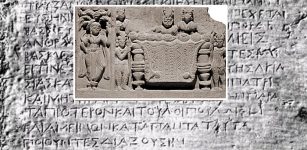 Robots Guarded Buddha’s Relics In Ancient India – Legend Tells
Featured Stories | Jun 28, 2019
Robots Guarded Buddha’s Relics In Ancient India – Legend Tells
Featured Stories | Jun 28, 2019 -
 Mysterious Lost Kingdom Of Urartu And Its Enigmatic History
Featured Stories | Jun 22, 2014
Mysterious Lost Kingdom Of Urartu And Its Enigmatic History
Featured Stories | Jun 22, 2014 -
 Jade Emperor – Supreme Ruler Of Heaven In Chinese Mythology
Chinese Mythology | Feb 21, 2019
Jade Emperor – Supreme Ruler Of Heaven In Chinese Mythology
Chinese Mythology | Feb 21, 2019 -
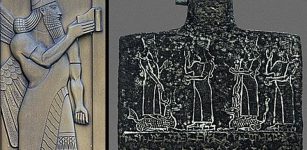 Mesopotamian God Nabu Inscribed The Human Fates Determined By The Gods
Featured Stories | Aug 7, 2018
Mesopotamian God Nabu Inscribed The Human Fates Determined By The Gods
Featured Stories | Aug 7, 2018 -
 Lesicheri Obelisk – Enigmatic Ancient Roman Structure – Bulgaria’s Tallest Surviving Landmark
Featured Stories | Jan 24, 2023
Lesicheri Obelisk – Enigmatic Ancient Roman Structure – Bulgaria’s Tallest Surviving Landmark
Featured Stories | Jan 24, 2023 -
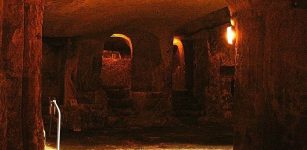 Magnificent St. Paul’s Catacombs – Largest Underground Roman Cemetery In Malta
Featured Stories | Aug 28, 2019
Magnificent St. Paul’s Catacombs – Largest Underground Roman Cemetery In Malta
Featured Stories | Aug 28, 2019 -
 Pandavleni Caves: Skillfully Carved Rocky Realms Decorated With Sculptures And Inscriptions In Brahmi Script
Featured Stories | Aug 1, 2016
Pandavleni Caves: Skillfully Carved Rocky Realms Decorated With Sculptures And Inscriptions In Brahmi Script
Featured Stories | Aug 1, 2016 -
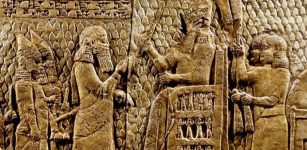 Lost Kingdom Of Idu And Its Seven Unknown Kings
Civilizations | Jul 25, 2023
Lost Kingdom Of Idu And Its Seven Unknown Kings
Civilizations | Jul 25, 2023 -
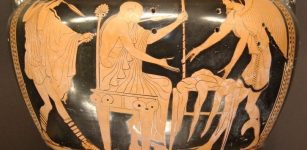 Prophet King Phineus Revealed The Future To Humans And Unleashed God Zeus’ Fury
Featured Stories | Nov 20, 2019
Prophet King Phineus Revealed The Future To Humans And Unleashed God Zeus’ Fury
Featured Stories | Nov 20, 2019 -
 How And When Did Ancient People Start Using Oil?
Ancient History Facts | Jun 28, 2018
How And When Did Ancient People Start Using Oil?
Ancient History Facts | Jun 28, 2018 -
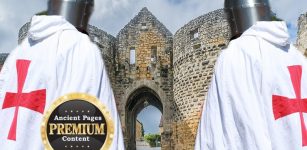 Strange Engraving Made By Knights Templar In French Village – Riddle Of The Rod – Part 1
Featured Stories | Oct 7, 2019
Strange Engraving Made By Knights Templar In French Village – Riddle Of The Rod – Part 1
Featured Stories | Oct 7, 2019 -
 Ancient Mystery Of The Unidentified Strangely Dressed Man Found In Massachusetts And His Connection To Undeciphered Rock Carvings
Featured Stories | Sep 19, 2024
Ancient Mystery Of The Unidentified Strangely Dressed Man Found In Massachusetts And His Connection To Undeciphered Rock Carvings
Featured Stories | Sep 19, 2024 -
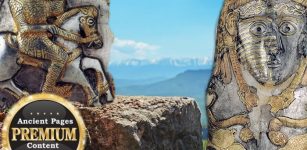 Unexplained Disappearance Of East Balkan Civilizations – Scientific Disagreement – Part 2
Civilizations | Apr 30, 2018
Unexplained Disappearance Of East Balkan Civilizations – Scientific Disagreement – Part 2
Civilizations | Apr 30, 2018 -
 What Was The Danelaw?
Ancient History Facts | Jun 4, 2016
What Was The Danelaw?
Ancient History Facts | Jun 4, 2016 -
 Proof Of Superior Ancient Technology – Found In All Four Corners Of The World
Ancient Technology | Mar 19, 2014
Proof Of Superior Ancient Technology – Found In All Four Corners Of The World
Ancient Technology | Mar 19, 2014 -
 Mysterious Ancient Female Society Discovered – What Happened To All The Men? Archaeologists Wonder
Featured Stories | Oct 3, 2024
Mysterious Ancient Female Society Discovered – What Happened To All The Men? Archaeologists Wonder
Featured Stories | Oct 3, 2024 -
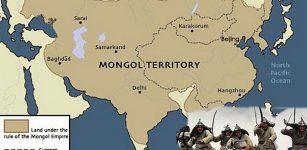 Pax Mongolica: Time Of Peace And Stability That Helped To Spread Technologies And Inventions
Ancient History Facts | Mar 28, 2016
Pax Mongolica: Time Of Peace And Stability That Helped To Spread Technologies And Inventions
Ancient History Facts | Mar 28, 2016 -
 Mysterious Advanced Underground Civilization And A Secret Society – Astonishing Discovery And Connection – Part 1
Civilizations | Apr 21, 2018
Mysterious Advanced Underground Civilization And A Secret Society – Astonishing Discovery And Connection – Part 1
Civilizations | Apr 21, 2018 -
 Mystery Of The Lost Continent Destroyed By An Ancient Cataclysm – Mysterious Islands – Part 2
Featured Stories | Aug 16, 2021
Mystery Of The Lost Continent Destroyed By An Ancient Cataclysm – Mysterious Islands – Part 2
Featured Stories | Aug 16, 2021



